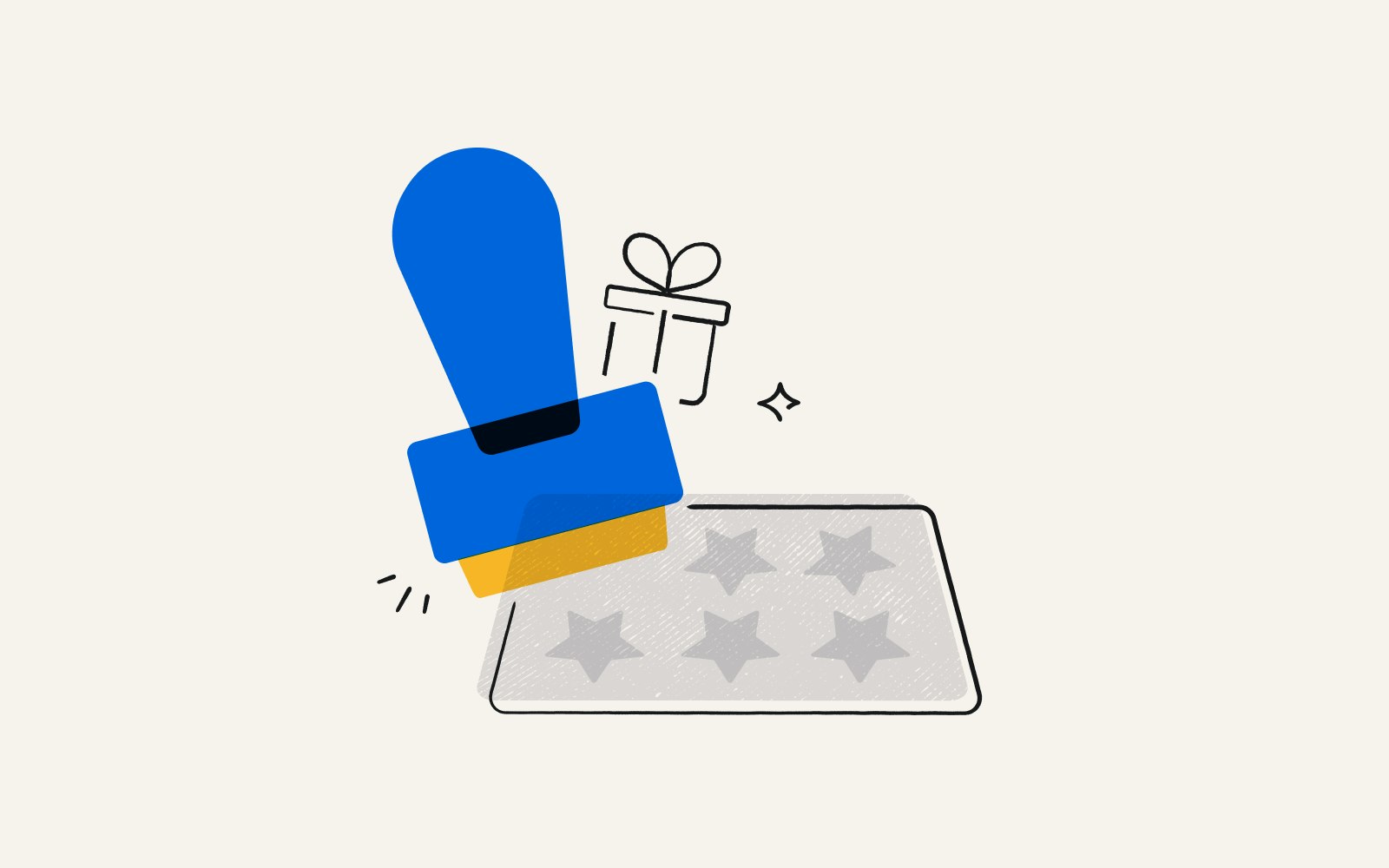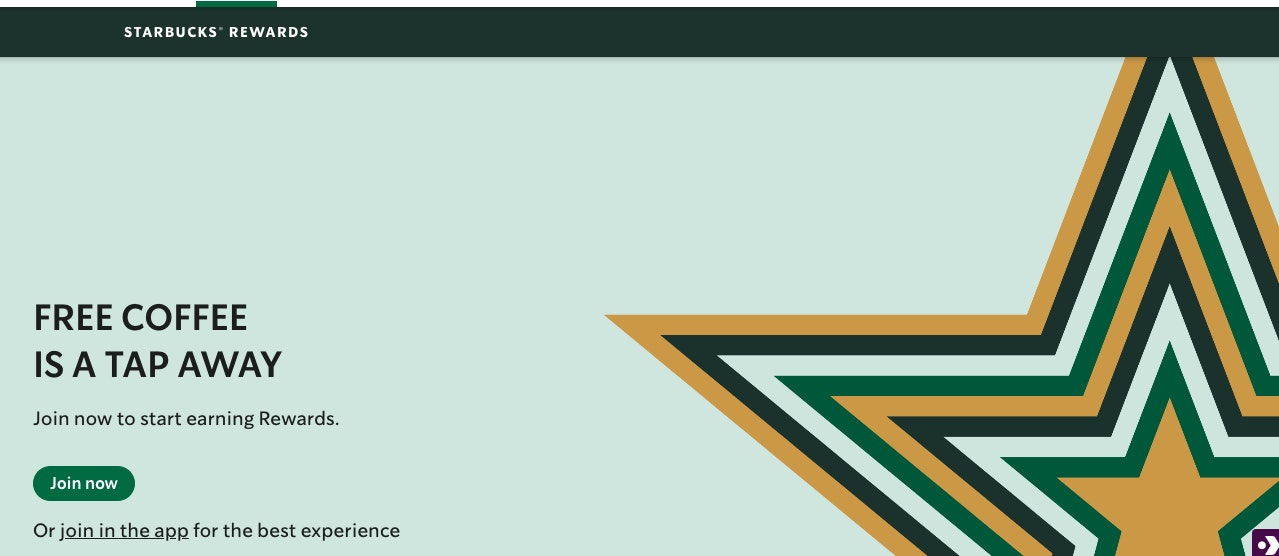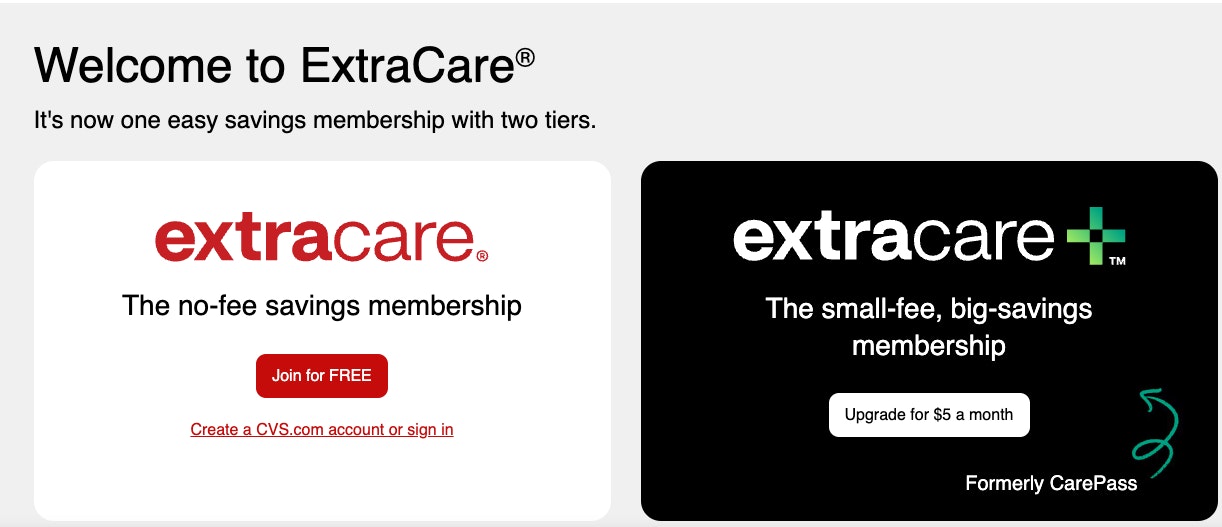10 examples of successful loyalty programs

B2C companies without loyalty programs miss out on between 30-60% more sales.
Two clear examples: loyalty rewards programs bring in more than half of Starbucks’ revenue and make up most of Sephora’s U.S. sales.
There are many different ways to structure your loyalty program.
Below, we’ll go over 10 successful loyalty rewards programs (including from Starbucks and Sephora) and outline what makes them exceptional.
What makes a customer loyalty program successful?
There are dozens of ways to structure a successful loyalty program.
Whether you reward customers with points that add up to free products, cashback on purchases, or access to exclusive benefits, the following factors impact how successful your program will be.
Memorable branding
Strong branding creates long-term customers. Longterm customers create staggering business growth: on average, companies with strong brand loyalty deliver 5x greater shareholder value compared to their peers.
Ultimately, the benefits of loyalty programs don't become obvious until customers make multiple repeat purchases. Customers who have a strong affinity for your brand are the most likely to sign up for your loyalty program and reap the perks.
That's because brand loyalists will almost always choose their favorite chain restaurant, clothing brand, or department store -- even in obscenely crowded markets or in situations where a competitor offers better pricing.
Consider Starbucks. There are virtually millions of coffee shops in the US and dozens within a single city. However, the Starbucks brand is strongly associated with premium lattes and specialty drinks.
Customers looking for a more gourmet start to their day will always opt for Starbucks, even if there are cheaper or more convenient options along their commute route.
The numbers prove this out: The Starbucks loyalty rewards program is one of the most successful in its category.
Strategic marketing
How you market and position your loyalty program matters just as much as what you're offering.
Consider where you choose to advertise your loyalty program, when you present the program to customers, and how you talk about your rewards.
Depending on your target audience, it may make sense to advertise your loyalty program on a dedicated landing page, via social media channels, or at the checkout counter.
If your company operates brick-and-mortar locations, requiring employees to prompt customers to join your loyalty program at the checkout counter is a profitable move.
About 50% of loyalty program members report signing up at checkout.
Meanwhile, if you primarily host your store online or your target audience largely comprises Gen Z customers, advertise your program in your app. Half of Gen Z customers say they sign up for loyalty programs on their phones.
Overall, though, the best place to advertise a loyalty program is with a standard banner on the company website. That's how 61% of customers across demographics sign up.
Simple user experience
The simpler it is for customers to earn, track, and cash out on loyalty rewards, the better.
Arduous redemption processes can discourage loyalty members from using their reward points, degrading the appeal of the loyalty program entirely.
Making it difficult to track reward points can also discourage participation. If participants can only track rewards on a physical punch card, for example, they'll miss out on reward points any time they lose or forget their card.
Keep it simple: allow participants to collect and track reward points in an online app. It's even better if you allow users to redeem their loyalty points in the same app and send them their reward digitally.
Personalized offers
Personalization matters. A whopping 86% of consumers say that personalization influences their purchases.
There are a number of ways to integrate personalization into your loyalty program. Offer different rewards to different customer segments based on their past purchasing behaviors.
If your program functions via a points system, give the top 1% of customers exclusive benefits to reward their exceptional loyalty.
Making customers feel a little special goes a long way.
Reward frequency
Reward customers at a frequency that's profitable for your business but still enticing for consumers.
The frequency and size of rewards will depend on your industry, revenue-per-customer, and the frequency with which customers buy new products.
If you operate a coffee shop, it makes sense to offer customers rewards for each beverage they buy and deliver rewards after the fifth or tenth repeat purchase.
On the other hand, if you're selling a high-ticket item that customers only need to purchase about once per year or less, like sneakers or jackets, it may make sense to offer more substantial rewards consumers earn after just two or three purchases.
How effective are loyalty programs?
A 2020 McKinsey survey found that customers are 30% more likely to spend more money on the brand after joining free loyalty programs. That statistic jumps to 60% for paid loyalty programs.
On top of that, Accenture Interactive found that loyalty program customers generate 12-18% more revenue for retailers compared to non-members.
10 examples of successful loyalty rewards programs
There are a number of free loyalty programs that allow customers to earn free products, cashback, discounts, and other perks based on repeat purchases. Below are some of the most successful examples.
Starbucks
Cost: Free
Type of program: Points-based (called “Stars”)
How to earn rewards: 1 Star per $1 spent. 2 Stars per $1 spent on preloaded funds. Rewards start at 25 Stars.
Starbucks Rewards is, in many ways, the quintessential example of a successful loyalty rewards program. Its 30.8 million members generated 57% of the company’s revenue in the second quarter of 2023. Customers earn Stars for every purchase, which they can redeem for rewards like an iced coffee or a signature Starbucks cup.
Starbucks also gives members double the points if they preload their loyalty cards with funds. It’s a clever tactic that secures the company a huge cash advance. As of Q4 of 2023, Starbucks had $1.7 billion in unspent gift cards and preloaded loyalty cards.
American Airlines
Cost: Free
Type of program: Tiered, points-based. Gold, Platinum, Platinum Pro, Executive Platinum.
How to earn rewards:
Flying on American Airlines or its partners
Making purchases with the AAdvantage branded credit card
Shopping with American Airlines' partners
AAdvantage is the loyalty program of American Airlines. Members collect miles or Loyalty Points that can add up to free award travel. With AAdvantage, fliers also get exclusive promotions and board earlier than non-members.
The possibility of earning enough miles for a free trip or to earn status is so enticing, people will opt to book with American Airlines vs. another airline, sometimes even paying more or taking a less convenient route.
This model is so effective for airlines largely because the cost of their service is high. It’s easy to just go to Starbucks even though you have almost enough stamps on your local coffee shop card for a free latte. Ultimately, you’re only missing out on a savings of about $4. But it’s harder for people to accept that they may miss out on miles or points, given it could save them hundreds or give them the chance of upgrades for a whole year.
Sephora
Cost: Free
Type of program: Tiered, points-based
Insider: Free
VIB: Spend $350/year
Rouge: Spend $1,000/year
How to earn rewards: 1 point per $1 spent
Launched in 2007, Sephora’s Beauty Insider now boasts 31 million members. Beauty Insiders can redeem points for samples in the Rewards Bazaar, Sephora's branded online rewards store. The famous feature of this loyalty program is the free birthday gift, which can be anything from 250 bonus points to a makeup set.
Sephora’s loyalty program is so successful that loyalty members drive the majority of the company’s sales.
What’s unique about Sephora’s program is that it’s updated on a regular basis. Rather than wholesale, dramatic changes (see: Dunkin’s misstep below), the makeup retailer consistently adds and changes the perks available across its three tiers (Rouge, VIB, and Insider) to attract new members and delight existing ones.
Nike
Cost: Free
Type of program: Membership
How to earn rewards: Nike’s loyalty rewards program does not give customers points. Instead, members sign up for free to gain access to exclusive benefits.
Nike members get free shipping, 60-day wear tests, and receiptless returns—all through the Nike mobile app. The 300 million members make repeat purchases between both digital and physical retail for the iconic shoe brand. According to Nike CEO John Donahoe, the loyalty program creates "meaningful direct lifelong relationships with consumers" and was the top reason its digital business grew 34% in Q2 of 2022.
Dunkin’ Donuts
Cost: Free
Type of program: Tiered, points-based. Top customers reach Boosted Status.
How to earn rewards: 10 points for every $1 spent. Rewards start at 150 points.
In 2022, Dunkin’ replaced DD Perks with a revamped loyalty program called Dunkin’ Rewards. These changes were marketed as a response to member feedback: the donut chain made it easier to collect points and redeem them for rewards beyond just drinks. Customers can now use points to score free treats, from donut holes to everything bagels.
But Dunkin Rewards serves as a cautionary tale: many (including the Boston University student body) are not pleased with the changes ushered in by this rewards rebrand. Because, behind its glossy exterior, there are cost-cutting measures hidden in the fine print. For example, members now need to spend $50 instead of $40 before earning a free coffee.
Another matter provoking the ire of Dunkin loyalists is that, prior to the change, a free drink used to mean any beverage of any size. Now, members need to earn more points for a latte, cold brew, or cappuccino vs. a drip coffee.
The moral of this story: loyalty programs build your brand. Changing your loyalty program such that it’s less rewarding and hoping no one notices will likely not work. It may cut costs short term, but it’ll hurt brand perception in the long run.
Examples of paid customer loyalty programs
The following paid customer loyalty programs offer customers exclusive membership deals, offers, and benefits at low annual cost.
CVS
Cost: Free and paid ($5/month or $48/year)
Type of program: Cashback and membership
How to earn rewards: Members earn 2% back in ExtraBucks Rewards (to apply toward future purchases).
The free CVS ExtraCare membership gives customers access to sales prices and rewards for purchases, prescriptions, and vaccinations. With more than 74 million members, CVS ExtraCare is one of the most popular loyalty programs in North America.
CVS employs the freemium model: the basic offering is free, while the paid ExtraCare Plus membership grants additional benefits, including free same-day delivery, free shipping, 20% off CVS Health brand products, and a $10 monthly bonus reward.
The freemium model is a bit controversial overall, but it makes perfect sense within the context of a loyalty program: free, basic benefits drive repeat purchases and brand loyalty, while the added perks of the paid membership create a revenue stream in itself.
Uber
Cost: $9.99/month or $99.99/year
Type of program: Paid membership
How to earn rewards: Uber One subscribers get free delivery on Uber Eats, up to 10% off deliveries and pickup orders, discounted pricing for trips, and free ride cancellation.
Uber is a great example of how pivoting from a free loyalty program to a paid one can pay off. In 2022, the ridesharing app sunsetted its free points-based loyalty program to focus on its premium membership, Uber One.
In the second quarter of 2023, 27% of gross bookings came from Uber One members.
Hilton
Cost: Free
Type of program: Tiered, points-based. Member, Silver, Gold, Diamond.
How to earn rewards: Starts at 10 base points per $1 spent. Members earn points on hotel stays, Lyft rides, Hilton branded credit cards, and dining. They can also purchase points.
Guests who join Hilton Honors get the guaranteed lowest prices on rooms and free wifi, and can use points to book free hotel stays. In addition to offering basic perks, the program sways people to choose Hilton over others via a tiered reward system.
Tiered reward systems offer members different benefits based on how much they’ve spent at your place of business. With Hilton Honors, there are 4 tiers: member (0-10 nights), silver (10+ nights), gold (40+ nights), and diamond (a whopping 60+ nights).
The perks get better and better the more nights you’ve booked with Hilton: Diamond members get things like executive lounge access, premium wifi, elite status gifting, and room upgrades.
Costco
Cost: $60 (Gold Star or Business) or $120 (Executive)/year.
Type of program: Paid membership
How to earn rewards: 2% back for Executive members
Did you know that about 80% of Costco’s gross margin comes from membership fees? That means it essentially operates its retail, from rotisserie chickens to tire installation, on a break-even basis to encourage membership.
And it works: 9 in 10 people renew every year, and their membership is well past 120 million worldwide. They further engage their most avid customers with a store-credit program on the more expensive Executive membership: a flat 2% bonus, paid out annually.
Amazon
Cost: $14.99/month or $139/year. Free 30-day trial.
Type of program: Paid membership
With 200 million members, Amazon Prime is a powerhouse paid loyalty program. Prime members get free delivery, exclusive deals, and access to popular movies and TV shows — plus the revenue-boosting convenience of not having to think twice about where to buy just about anything they need. In the third quarter of 2023, Amazon beat estimates and brought in $10.17 billion in subscription services sales, including Prime, not to mention untold extra sales.
Customer loyalty program ideas
How you structure your loyalty program will depend on your customer's purchasing behaviors and your budget. While some companies may have the budget to offer cashback or experiential rewards to top-tier members, others may opt to reward customers with free products based on a points system.
Below are a few ideas for how to run your loyalty program.
Points-based rewards
Implement a system where customers earn points for every purchase they make, and allow customers to redeem their points for discounts, free products, or exclusive items. You can incentivize greater spend by giving customers bonus points on certain products or during specific promotional periods.
Tiered membership levels
Create different membership levels based on purchasing behaviors or engagement levels. Each tier can offer greater benefits, from exclusive discounts and early access to sales to special events.
Gamification
Incorporate game-like elements into your loyalty program. Customers can earn badges, rewards, or points by completing tasks (like trying new products or mentioning your brand on their social accounts) to make the experience more fun.
Birthday and anniversary rewards
Send personalized offers or gifts to customers on their birthdays or anniversaries. This adds a level of personalization, while also reminding customers of your brand at regular intervals.
Exclusive access and experiences
Offer loyalty members exclusive access to limited-edition products, special events, or unique experiences. This not only rewards loyal customers, but also fosters a sense of community among brand loyalists.
Inspiration and examples for marketing your customer loyalty program
Stumped on how to promote your loyalty program? Learn from the best.
Advertise your loyalty program with benefit-forward copy
"Free coffee is a tap away."
The tagline on Starbucks' rewards page is a masterclass in simple, snappy copy. Rather than asking customers to join their loyalty program, explaining how to earn rewards, or diving into how the program is set up, the brand emphasizes what customers have to look forward to.
Starbucks emphasizes two key benefits here:
Loyalty members can earn a free coffee.
The user experience is extremely simple.
When marketing your own loyalty program, remember to keep it simple. Skip the logistics. Cut to the good stuff.

Give customers options
CVS offers a two-tiered loyalty membership program: one free, and one paid.
On their loyalty program landing page, they present customers with both options:
Join the free program and save with no fee.
Join the premium loyalty program for a small fee and even bigger savings.
Clearly marketing both loyalty program options to interested customers increases the likelihood that customers who originally came for the free tier may consider switching to the premium tier for even better rewards.

Be upfront: List exclusive benefits right on your site
If you offer customers exceptional benefits, don't hide the perks in the fine print.
Costco's membership page leaves nothing to the imagination. The company lists out all the benefits card holders can expect to earn up front, before potential members make the leap to sign up.
Of course, this isn't always possible. Some loyalty programs switch up the rewards they offer on a regular basis, and can't tell potential members exactly what they'll earn when they're in the consideration stage.
But if you have a static, proven, formulaic approach to rewards, it's helpful to tell potential customers what they have in store.
This approach is especially applicable to retailers who ask customers for a significant upfront annual payment before joining.
It's hard to commit more than $100 to a membership program if you don't know what you'll earn.

Loyalty rewards programs pay off when done right with Tremendous
Whether you’re starting or scaling your loyalty program, fine-tuning your incentives is key. Use these 10 successful examples as inspiration. Many share the following traits:
They make it free to join at least the basic membership.
They have a mobile app for convenience.
They offer some sort of “elite” status only top customers can achieve.
Their most beloved rewards are monetary, whether that’s cashback or discounts.
If you’re sending monetary rewards, Tremendous is the simplest way for businesses to personalize incentives and for customers to cash out. Request a demo to see why we’re trusted by organizations like Notion, Amazon, and Google.